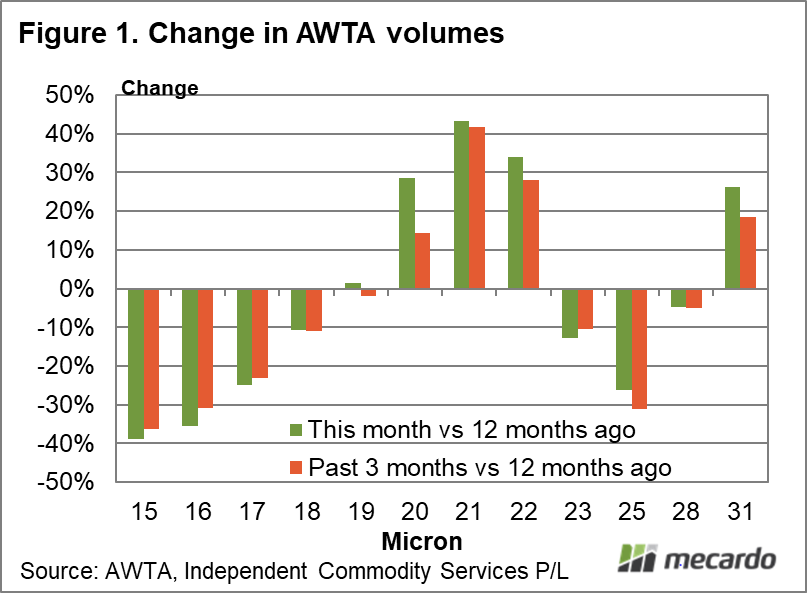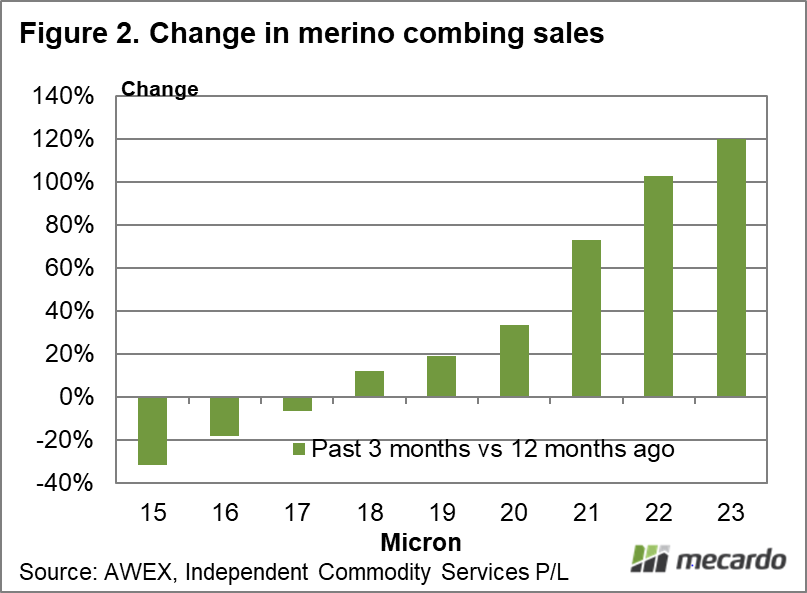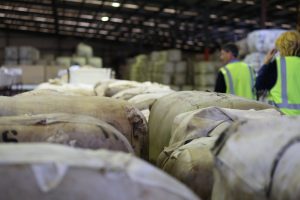As changes in the relative supply of different micron categories play a big role in the changes in the relative prices of the different categories, it is worthwhile having a look at the latest changes in the supply of wool by micron category.
The AWTA monthly data supplies our best view of greasy wool production in Australia, which becomes even more important as Australia supplies around three quarters of the worlds merino supply. The AWTA data therefore provides an excellent view on most of the world merino production (view AWTA data here).
Figure 1 shows the year on year change in volume by micron for wool tested in January and tested in the three months to January. AWTA data does not distinguish between breed so in the broader merino micron categories where crossbred wool supply rapidly becomes dominant the supply picture is less clear. Figure 1 runs from 15 micron through to 30 micron and broader wool.
As earlier Mecardo articles have discussed the supply of finer merino wool has been falling heavily, while the supply of broader merino wool has been rising, with the changes in supply near peak levels. The crossbred clip has experienced a similar reaction to the improved seasonal conditions, and this shows up in the drop in 25 micron wool and increase in 31 micron (which is 30 micron and broader) wool. In summary Figure 1 shows that the pressure on micron premiums and discounts of the past year from changes in supply continues.
Figure 2 shows the year on year change in the volume of combing length merino wool (clean basis) in the three months to January. The schematic runs from 15 through to 23 micron. As expected there is less very fine wool sold and more broad merino. However the fall in fine merino volumes is less than the AWTA data is showing. For example look at the 17 micron category. Sales are down 7% while AWTA volumes are down 23% for the past three months. This implies that grower stocks are flowing back into the market in response to the relatively strong prices for fine merino wool. It looks to be the opposite story for broad merino wool, which warrants more analysis to see if this is actually the case.
What does it mean?
If the view is correct that farmers are drawing down their stocks of fine wool, to partially fill the gap in supply caused by the improved seasonal conditions, then it is quite possible these stocks will help to cap the fine micron premiums (perhaps not for sub-15 micron wool where production is very small). The latest AWTA data shows that the Australian wool clip continues to broaden, which will continue to maintain pressure on micron premiums and discounts.
Have any questions or comments?
Key Points
- AWTA data shows that the supply of merino wool continues to be skewed to the broader categories.
- The continued skew to broader wool means the pressure will continue on the Merino micron premiums to widen or at least stay wide.
- Sales volumes imply that farmers are topping up auction sales with stocks.
Click to expand
Click to expand
Data sources: AWTA, AWEX, ICS , Mecardo














